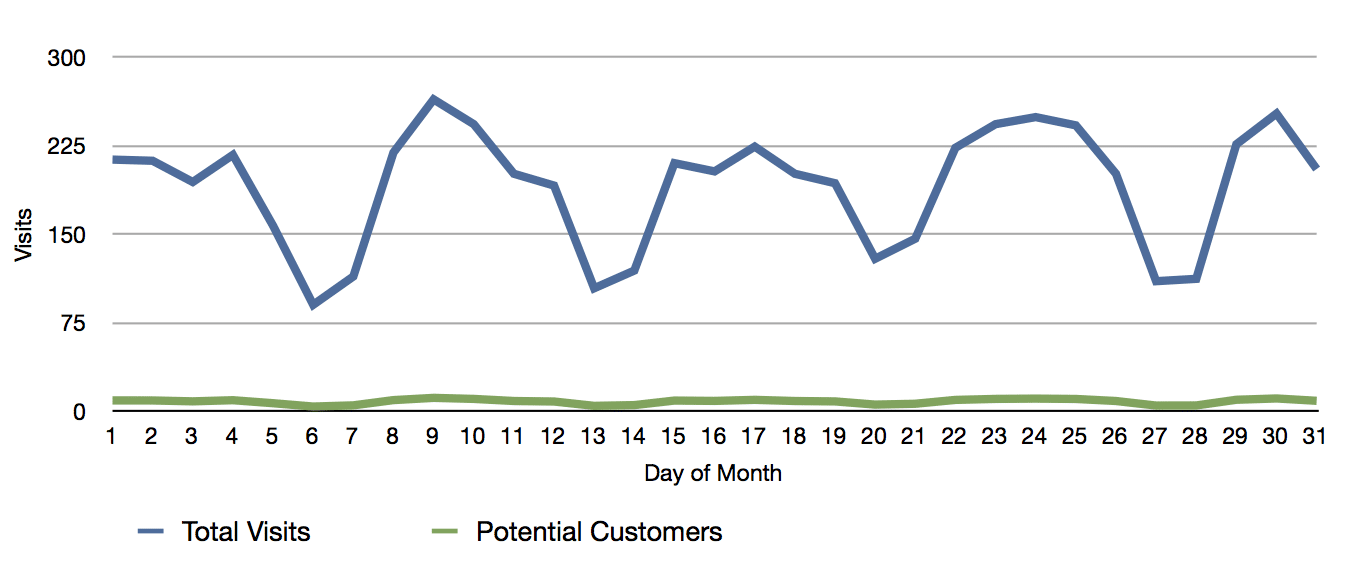Innovation services firms can use thought leadership marketing very effectively. At Atomic, one of our core value mantras is “teach and learn”. We practice this value and further our marketing efforts through publishing, presenting and blogging. Since we’re analytical, somewhat data-obsessed people, we of course attempt to track the effectiveness of our thought leadership marketing through Google Analytics (GA).
Combined, the Atomic Object website and blog receive in the neighborhood of 5000-6000 visits per month. The blue line in the graph below shows the visits for every day in August 2011. GA can tell you all sorts of interesting things about visitor behavior, which pages are popular, where visitors live, traffic from browsers, etc. You can spend a lot of time exploring and pondering the meaning of the data.
Unfortunately, GA can tell us almost nothing about the most important visitors to our website.
I estimate we’ll handle approximately 300 sales opportunities this year. Even assuming they all came through the website (they don’t, obviously), and further assuming that 10 times as many potential customers look at our website as actually contact us, the visits from potential customers is a drop in the bucket compared to the overall site traffic. The green line in the graph shows theoretical potential customer traffic modeled on the assumptions above (10 potential/actual * 300 actual/year * 1 year/12 months = 250 potential/month). This drop in the bucket is probably exaggerated, as I think it’s not terribly likely that our site sees 10 potential customers for every actual contact. Multiplying by 10 also covers the other very important “customer” of our website — potential new hires.
When the most important traffic to your website is tiny compared to the total traffic, it’s difficult to use GA to measure the effectiveness of the site for its ultimate purpose. For example, GA can tell us nothing about which browsers our potential customers are using. And the content I wrote 15+ years ago on OO aggregation vs inheritance probably isn’t too interesting to potential customers, even if it is one of our most visited web pages. Do potential customers see our client list? our bio pages? our case studies? GA is silent.
While there are some clear advantages to having a lot of traffic, I’ve found it very difficult to pull the “signal” of potential customers out of the “noise” of overall visits. It’s a good reminder that what Eric Ries refers to as vanity metrics applies more broadly than just to startups. In the end, if the phone doesn’t ring or the contact mailbox is empty, all the traffic in the world is for nought.
- Attention: Spending Your Most Valuable Currency - February 10, 2022
- Slicing the Revenue Pie in a Multi-Stakeholder Company - July 30, 2021
- Commercial versus Existential Purpose - July 19, 2021
- How I Misunderstood Mentorship and Benefited Anyway - June 16, 2021
- Sabbath Sundays and Slow Mondays - June 4, 2021
